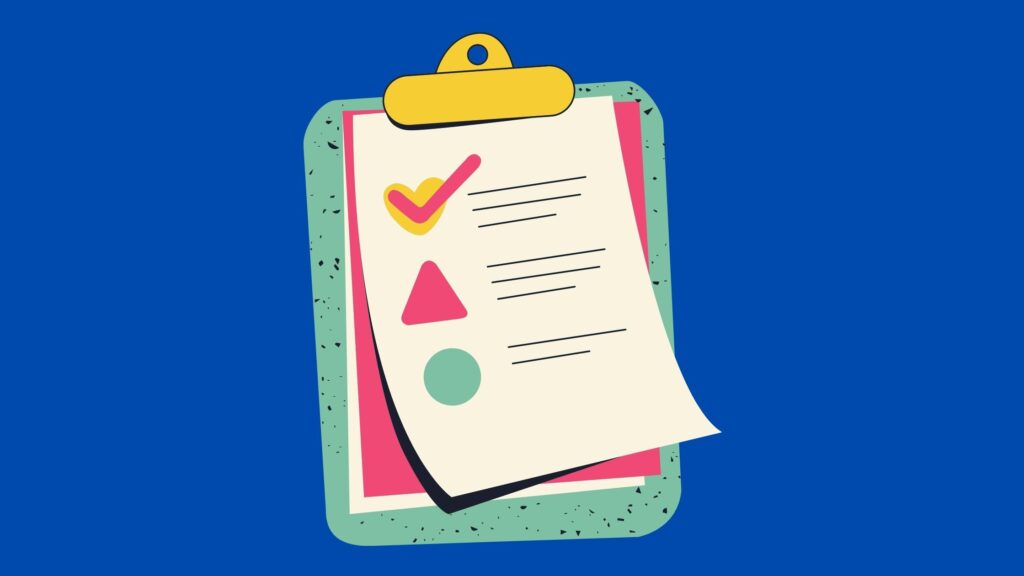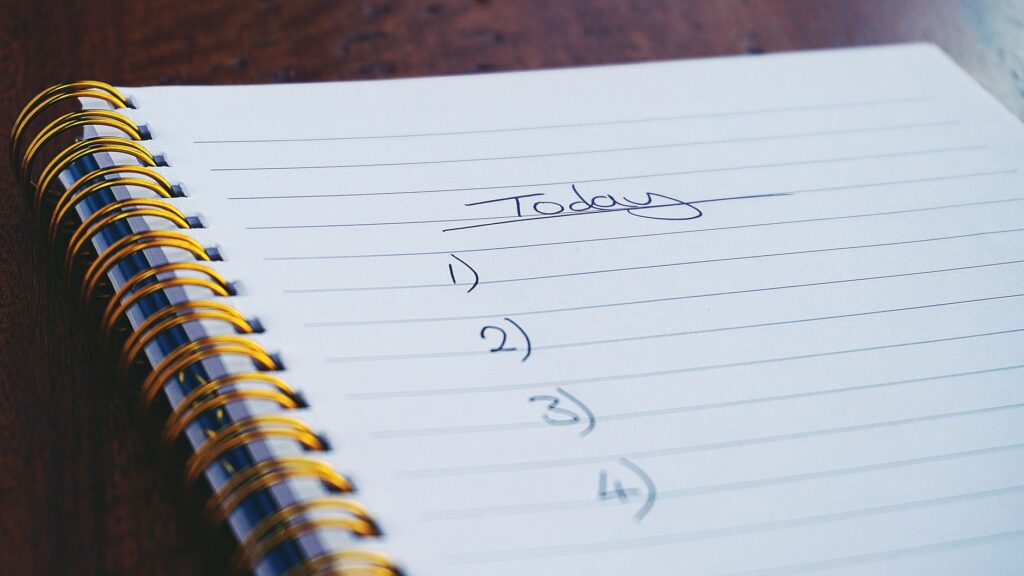
How to Punctuate a List

There are four main ways to punctuate a list: with a comma, semicolon, colon, and dash.
3 Types of Lists
There are three types of lists: numbered (ordered) lists, bulleted (unordered) lists, and check lists.
Numbered Lists
Numbered lists are created by using numbers and punctuation such as commas or periods. The items in a numbered list can be single words, phrases, or complete sentences.
For example:
“Procedure to apply:
- Fill the application form and pay your application fee.
- Visit the Admin Building on Maple Street.
- Hand your form in person to Mrs. Smith, get an application reference number, and save it in a safe place.”
Bulleted Lists
Bulleted lists are created by using bullets. The items in a bulleted list do not have to be complete sentences.
NOTE: For “bullets” you can use any symbol you like. You do not have to use round circles for bullets. It depends on the style guide you are using. Some people, for example, use asterisks or diamonds and they look pretty too.
For example:
“Transportation options available:
- Airplane
- Ship
- Car
- Bicycle”
As you can see, the bulleted list items do not have to be listed in any given order, in contrast to a numbered list.
Check Lists
A checklist is a bulleted list. Each item starts with a checkbox. It is defined as “a list of items required, things to be done, or points to be considered, used as a reminder.”
All the rules that apply to using of punctuation marks (to be explained in detail in the following sections) applies to checklists as well.
How to Use a Comma to Punctuate a List
To punctuate a list with a comma, put a comma after each item in the list, except the last one. For example:
I have three items on my list: milk, eggs, and bread.
NOTE: The second comma in the above sentence is also known as the “Oxford Comma” or “Harvard Comma.”
There is no need for a comma when you are using a numbered (ordered) or bulleted (unordered) list:
“I have three items on my list:
- Milk
- Eggs
- Bread”
Or:
“I have three items on my list:
- Milk
- Eggs
- Bread”
However, if you use a conjunction like “and” to give your list a more literary flavor and articulation, you can use a semicolon before the last item:
“I have three items on my list:
- Milk
- Eggs, and
- ”
“I have three items on my list:
- Milk
- Eggs, and
- Bread”
Series of Actions
You can use commas to separate a list of actions related in time or in some other way.
“After taking a shower I shaved, put on my socks; and finally went out the door with an umbrella.”
As you can see, the three actions described in the above list follow one another logically in a time sequence. You cannot go out the door and then take a show, can you?
Use commas if the list is an integral part of the sentence:
“Milk, eggs, and bread are ingredients for my favorite pancakes.”
How to Use a Colon to Punctuate a List
A colon is used to introduce a list.
For example:
“I love:
- Swimming
- Lifting weight
- Cycling”
“The items I need for the project are: paper, pencils, glue, and pens.”
Start the first word after a colon with a lower-case letter.
“She had reasons to be happy: her marriage was going well and she earned good income.”
“I have four siblings: two brothers and two sisters.”
If the list starts with a proper noun, start the first word after a colon with an upper-case letter.
“I’m going to three different stores: Walmart, Target, and Publix.”
Colon is used to write time as well:
“4:25 a.m.” “22:45” “5:20 p.m.”
How to Use a Semicolon to Punctuate a List
Using a semicolon is a tricky business. You have to be careful when using a semicolon since it’s very easy to use it incorrectly.
Semicolon does not separate isolated one-word list items. It separates statements that are closely related “but require a separation more emphatic than a comma” (New York Times Manual of Style and Usage).
What do we mean by “emphatic”?
“Emphatic” is an adjective that means “showing or giving emphasis; expressing something forcibly and clearly.”
Sometimes a semicolon in a list is used to contrast two opposing ideas and actions:
“My mom loves to travel; my dad does not.”
List of Authors
A widespread usage of semicolons is when a number of authors are listed together with their title or position. You should use comma after the author’s name but a semicolon after the title or position:
“The panel featured Jane Smith, NYT columnist; Ravel Pinto, an economist; and Ragu Patel; independent researcher.”
List of Geographic Locations
You can use the same idea when listing geographic locations:
“The cheapest burgers are sold in Rockcity, Montana; Praire, Illinois; and Tricity, Wisconsin.”
Numeric (Ordered) Lists
There is no need to use semicolons in numeric (ordered) lists:
“The panel featured
- Jane Smith, NYT columnist
- Ravel Pinto, an economist
- Ragu Patel; independent researcher.”
However, if you use a conjunction like “and” to give your list a more literary flavor and articulation, you can use a semicolon before the last item:
“The panel featured
- Jane Smith, NYT columnist
- Ravel Pinto, an economist; and
- Ragu Patel; independent researcher.”
Bulleted (Unordered) Lists
There is no need to use semicolons in bulleted (unordered) lists:
“The cheapest burgers are sold in
- Rockcity, Montana
- Praire, Illinois
- Tricity, Wisconsin”
However, if you use a conjunction like “and” to give your list a more literary flavor and articulation, you can use a semicolon before the last item:
“The cheapest burgers are sold in
- Rockcity, Montana
- Praire, Illinois; and
- Tricity, Wisconsin”
Two Independent Clauses
Remember that a semicolon can be used to connect two independent clauses that are related in meaning. An independent clause is a complete sentence with a subject, object, and a verb.
“I need to buy five items at the store: milk, eggs, bread, cheese and carrots; but I don’t have enough money.”

How to Use a Dash to Punctuate a List
You can use dashes inside a sentence to separate a list from the rest of the sentence. That creates a more user-friendly sentence that is easy to read, understand, and retain.
Two Types of Dashes
There are two dashes: EM dash (long) and EN dash (short).
This is EM dash: — (long)
This is EN dash: ‒ (short)
3 Ways to insert dashes
- To insert these dashes in Word, select it from Insert (Tab) > Symbols.

- To enter an EM dash on a Windows PC machine, press Alt + 0151 on your keyboard.
- In Word, go to File > Options > Proofing > Autocorrect Options:

- Type two minus signs in the REPLACE field; Alt + 0151 in the WITH field. Click ADD. Then click OK, as shown below:

Now every time you type two minus signs in a row, you’ll insert an EM dash easily: —
BEST PRACTICE: Use the long EM dash when using it to separate a list from the rest of the sentence, as explained in the below examples.
Examples
Place the EM dashes before and after the list. Use commas or semicolons as appropriate inside the list, as explained earlier in this article (see above).
An example with EM dashes and commas:
“The governors of Eastern states — Maryland, Delaware, New York, New Jersey — could not agree on a common action plan.”
An example with EM dashes, commas, and semicolons:
“The recipients of the Sterling Prize — Jane Smith, NYT columnist; Ravel Pinto, an economist; and Ragu Patel; independent researcher — each won a prize of $100,00.”
Use EM dashes to set off a list when the items are interrupted by words in the sentence.
“I was going to buy — milk, eggs, bread, and cheese — but I forgot.”
Periods
Use periods to punctuate the end of each sentence in a list, no matter how long it is.
Example:
“I bought milk, eggs, bread, cheese, and ham. I also bought a carton of orange juice, two cans of tuna fish, and a box of crackers.”
Parentheses
Use parentheses to enclose a list when it is mentioned parenthetically.
Example:
“The teacher (who is also my friend, advisor, and mentor) said I could use books and papers from class.”
MORE INFO
| How to Write and Punctuate Measurements Correctly |
| How to Write Measurements for Furniture |
| How to Write Dimensions in Feet and Inches |
